The Glade

In the Glade, each instrument has a control. It can be a microphone, a camera, a button or a sensor. Signals are sent to the MISK program in a computer. There, the signals are converted into musical qualities- such as how strong or high a note is and what effects or what behavior a sound should have. The program can also send signals to to control lights.
In the Glade, the instruments talk to the computer, showing the projection on the wall. The light strings in the tree have conductive fabric threads woven into them. The interactive fabric has a 3D camera on the inside. There are microphones on the back of the plates on the tactile wall. These are examples of how the MISK program can put together interactive solutions.
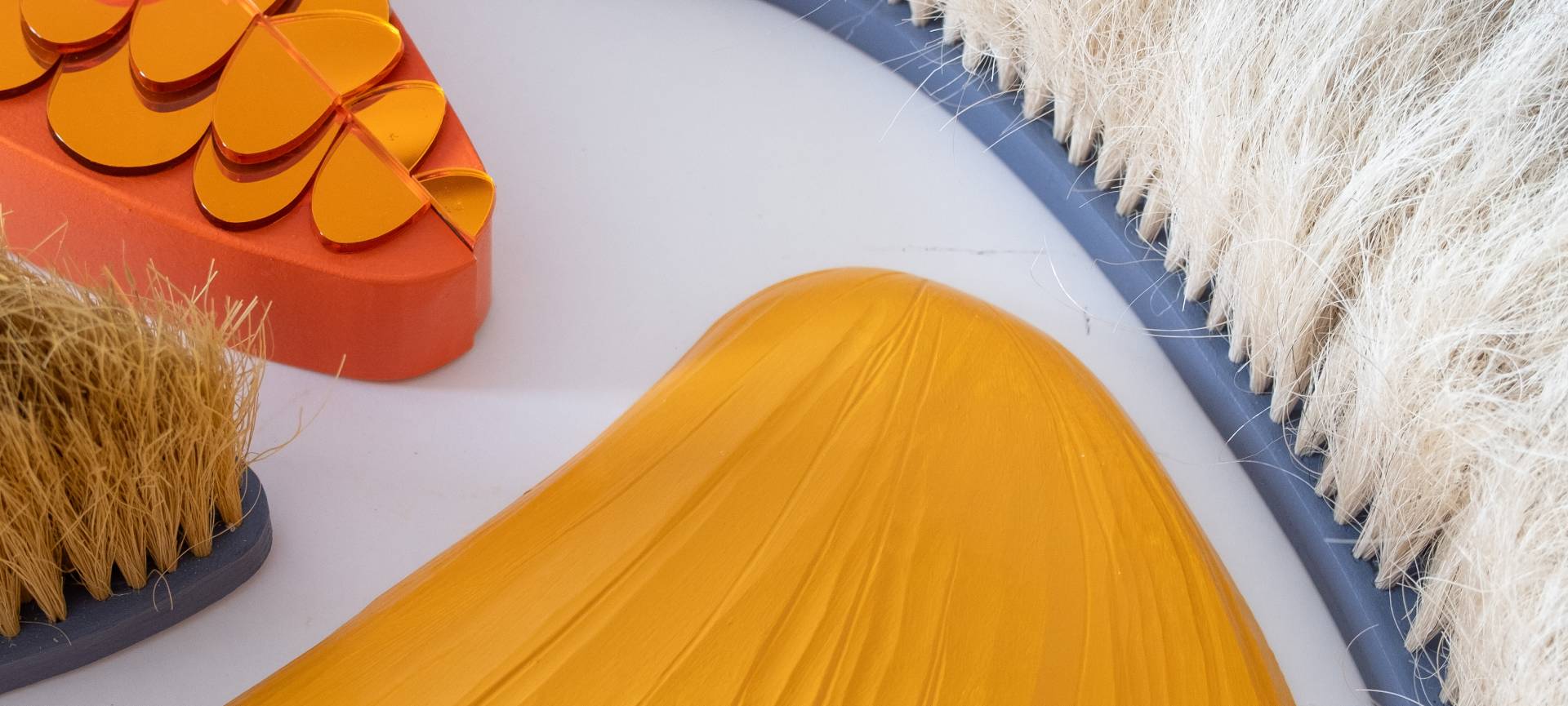
The inspiration for some of the tactile elements in Gläntan comes from Dalsland in West Sweden, where Laura Blake and Álvaro Aramburu, the designers, live. The work was inspired by walks that focused on small details like ferns, mosses, and mushrooms. You might recognize some of the shapes and colors. In the forest, these small details are important parts of the ecosystem that rely on each other to help the forest thrive. Laura and Álvaro believe we can learn a lot from these small parts of nature. They show us how we should respect our surroundings, each other, and the important role we can all play in the world.
MISK
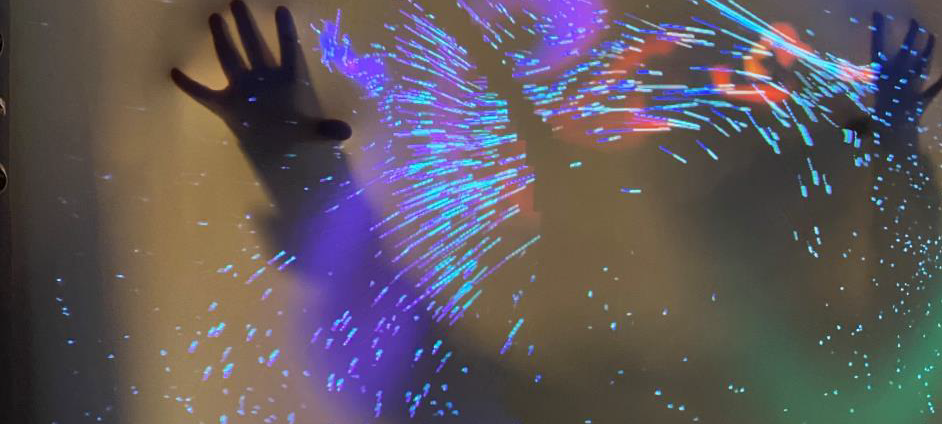
MISK stands for music, interactive design, sensory stimulation and quality. The instruments in the Glade offer varied opportunities to express yourself, adapted to different people. They have been developed in the MISK project run by Eldorado Resource Center, Furuboda Folk High School, and the Faculty of Engineering at Lund University. The project is financed by the Swedish Inheritance Fund. The Glade is a collaboration between the MISK project and the National Museums of World Culture.
Sensory impressions
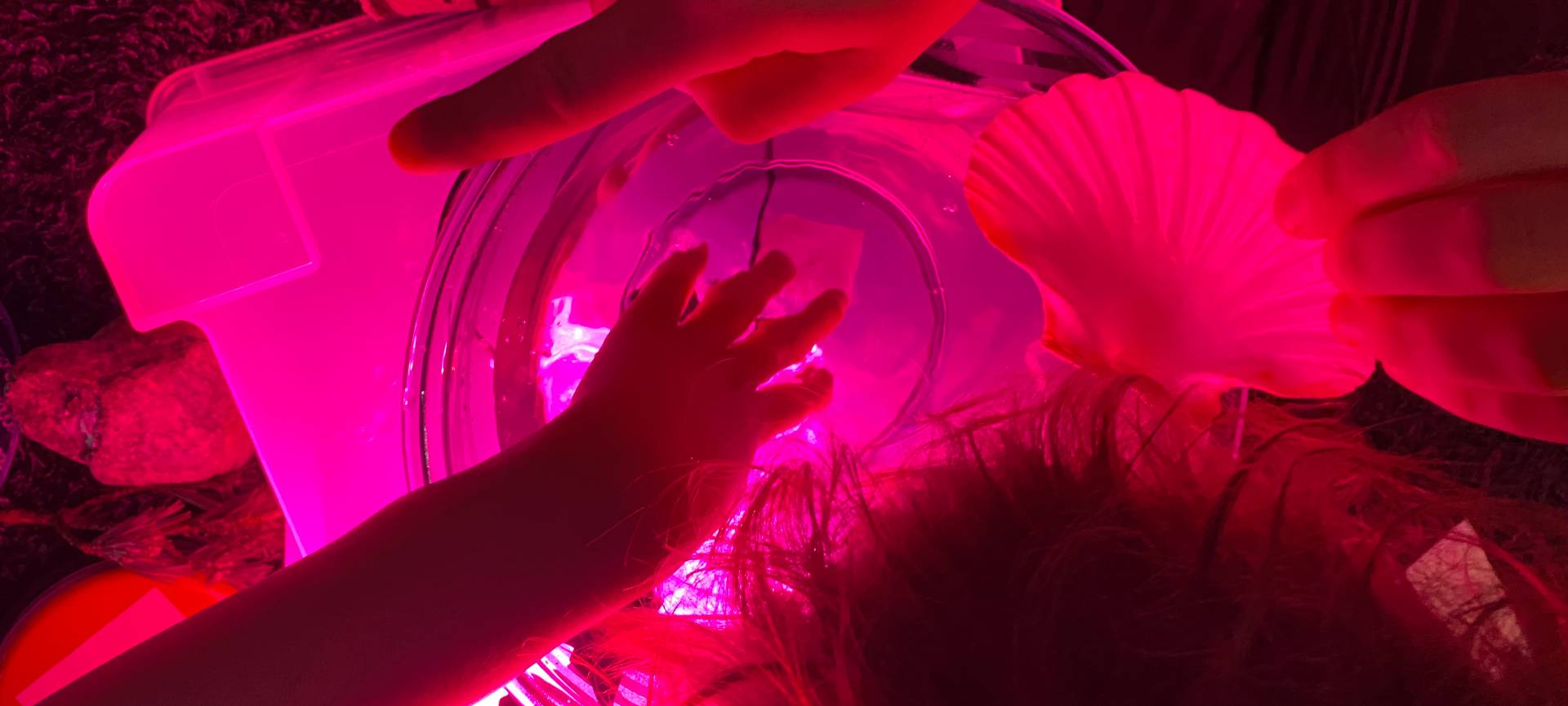
Everyone needs impressions for their senses. Sensory impressions are necessary for our development. They are like nourishment for the brain and we need a variety of different impressions to feel good. Many times, what we enjoy are experiences that stimulate our senses in a pleasant way.
The experience of the impressions is affected by how we feel, our experiences and the situation we find ourselves in. What is pleasant for someone can be unpleasant for someone else. Curiosity and a desire to explore often arise when we are allowed to experience with different senses.
A good interplay

Interaction occurs every time we meet another human being. It is valuable to be present and show interest in each other regardless of who we meet. If we do it in a good way, we can understand each other and enjoy the meeting. We need to gain insight into the other person’s world and use our senses to capture what is important to the person.
By actively interpreting and confirming each other’s communication and paying attention to small signals, we can build strong and rewarding relationships. Communication is much more than what is said verbally. When we experience together, we create good conditions for fostering good interaction and increased understanding of each other.
Multisensory rooms
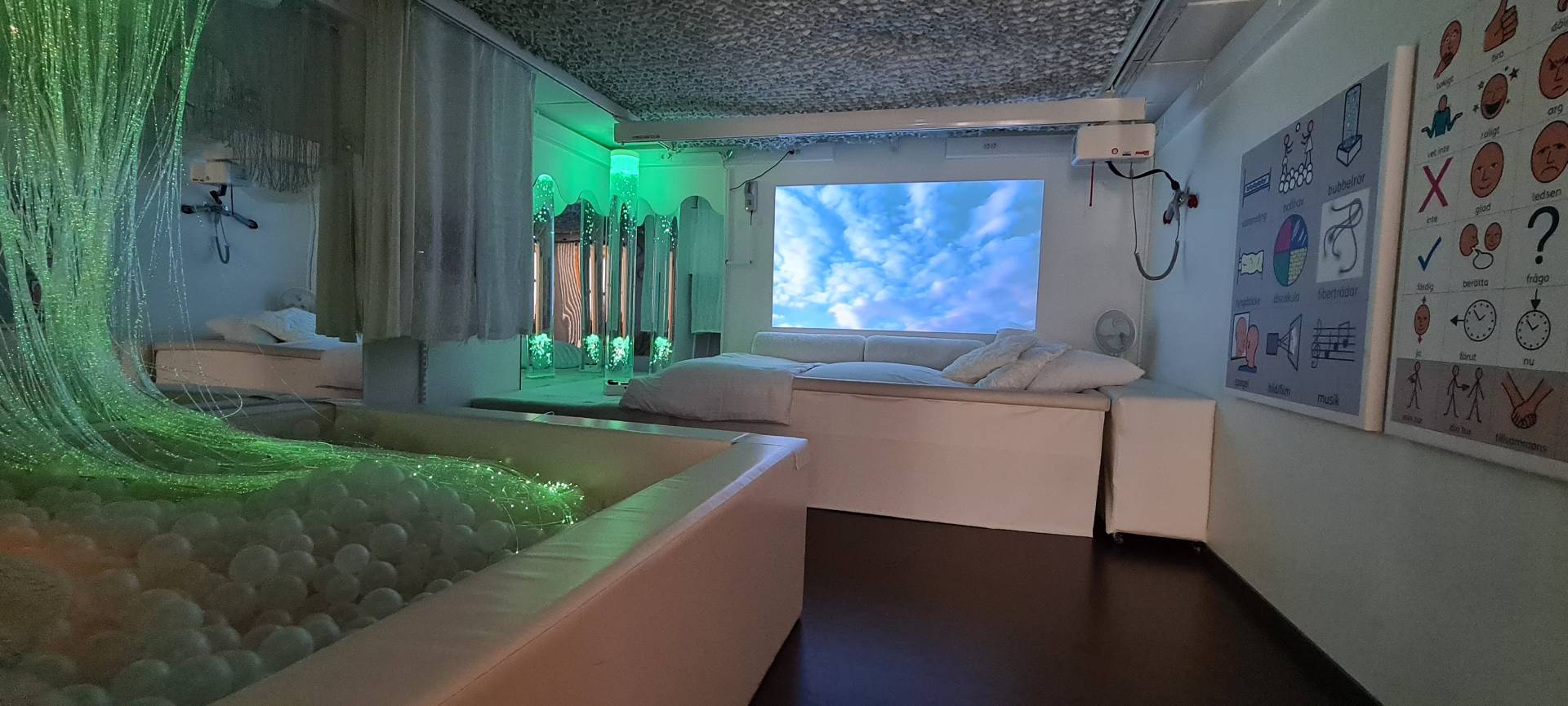
Multisensory rooms are made to provide distinct and pleasant experiences for the senses. The impressions can be adapted for the person visiting the room. To create a sense of harmony and clarity, different types of lighting, tactile materials, music and vibrations are used. Sensory rooms are another name for multisensory rooms. It is common to furnish a sensory room with a ball pit, bubble tubes, fiber optics, a water bed or a music bed.
Multisensory rooms are used in many different contexts, for example in habilitation, psychiatry, school, care and social care. You can also find them in various public environments, such as libraries and museums. Snoezelen is the name of a method that uses multisensory rooms. The Snoezelen method is used in many parts of the world.
Build your own MISK
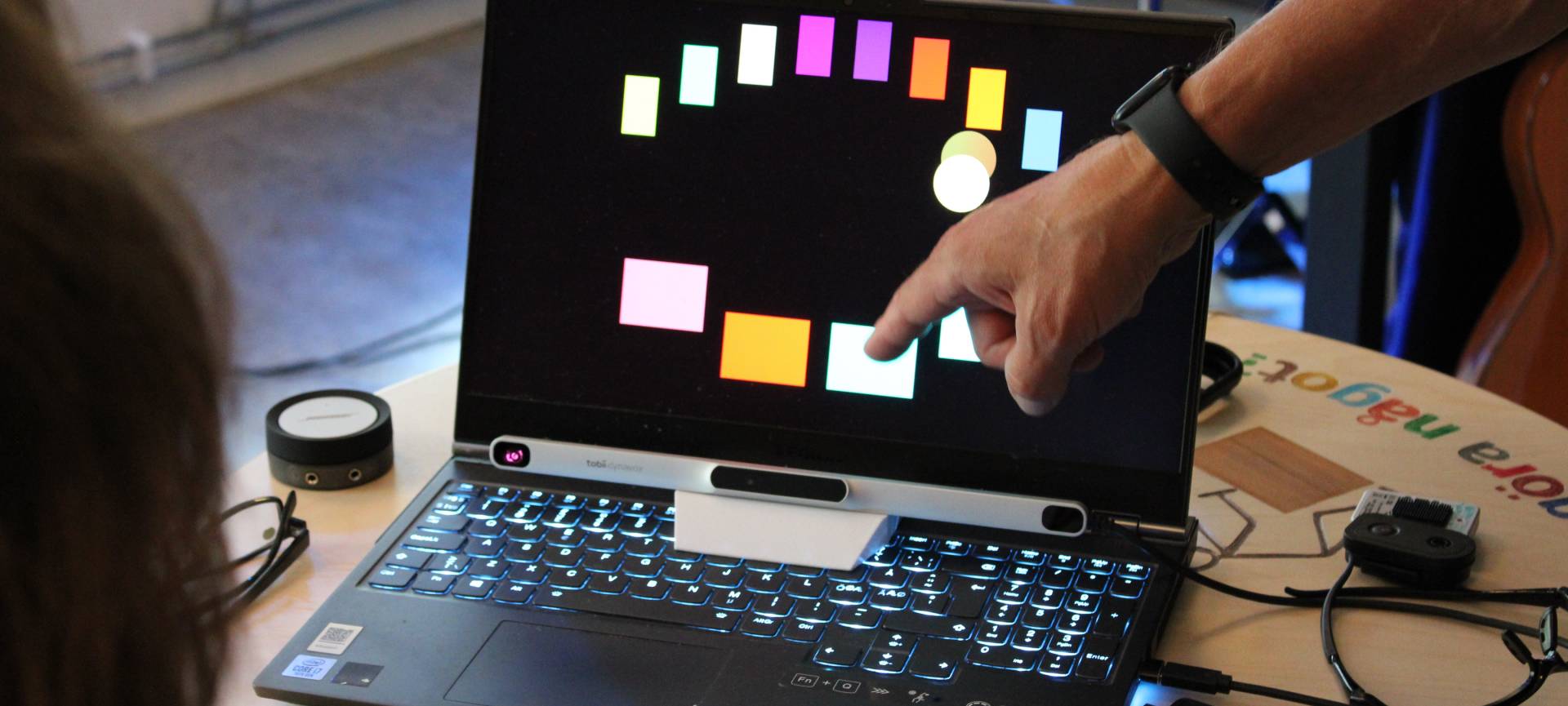
The MISK programme is free and can be downloaded to a computer. You can use the computer mouse to play. You can also use buttons, joystick, game controllers or eye control. The computer’s microphone or camera can also be used as a control method, as can a program on your phone or touchpad that speaks to OSC or Midi.
You can download MISK's own apps, Face Music or MISKBall, if you have iOS.
Now, choose what you want to control in MISK. Do you want to play audio files, synthesizer, display images or perhaps experiment with sound effects? Click ”controls” next to the feature you want to explore and chose your control method. You will have to test a few different settings to get the result you want.
Dare to try!